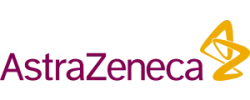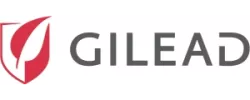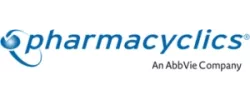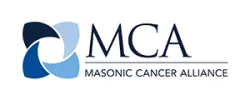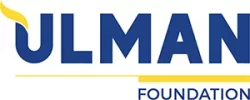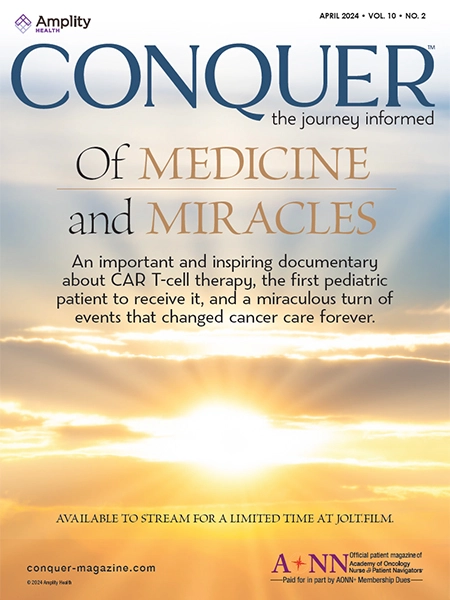
Anticipation for the AONN+ Midyear 2019 Conference in the Golden State was so great that some attendees couldn’t wait for it to begin. Fortunately, they didn’t have to, with 2 morning preconference sessions kicking off a compelling slate of events throughout the weekend. Focusing on grant writing and financial navigation, these intensive sessions served as informative precursors to the day’s remaining events. Over lunch, a spirited welcome to beautiful San Diego from AONN+ leadership added to the excitement, getting navigators from all around the country enthused for 3 days of education, networking, and, of course, the gorgeous views of the waves along the shoreline.
Experts Outline the Art and Science of Grant Writing

Although often seen as an arduous process, grant writing can quite literally pay dividends for oncology navigation program. In a preconference session, Linda Burhansstipanov, MSPH, DrPH; Linda U. Krebs, RN, PhD, AOCN, FAAN; and Lisa Harjo, MEd, outlined key objectives to fulfill in the grant-writing process to help ensure success in garnering funds.
The presentation opened with a pretest of the attendees to get a baseline reading of their knowledge of the grant-writing process. Employing an electronic audience response system, Dr Burhansstipanov asked a series of 8 questions, withholding the correct answers until the end of the presentation. She also asked a few questions that yielded basic demographic information about the attendees. This was an effective way to model collecting and applying quantitative data. Data collection, as the presenters emphasized, is a crucial part of any project, and showing the proposal reviewers how it will be done could set one’s proposal apart in the highly competitive selection process.
After the introduction, Ms Harjo explained that a critical step in any grant-writing endeavor is identifying the best potential funding source for a project. To determine those that may be a good fit, one must evaluate the wide variety of funders. Federal sources of funding for oncology navigation programs include the National Cancer Institute (NCI), Centers for Disease Control and Prevention, National Institute of Nursing Research, and National Science Foundation. Obtaining grants from foundations is no easy task but can be rewarding for those who put in the necessary work. Like grants from federal sources, foundation grants come with stringent sets of rules and regulations to which applicants must adhere. In addition, traditional cancer prevention organizations—such as the American Cancer Society, which currently is not funding community-driven initiatives, and the American Lung Association, which funds 15% of all applications—can be difficult to tap, Ms Harjo explained.
At the state level, departments of public health can be resources for grants. Both funding and support are also available at the regional and local levels, from cancer centers and charitable organizations. Professional organizations, such as the American Society of Clinical Oncology and Oncology Nursing Society, represent another wellspring of potential funding. Corporations are yet another possible resource, as they receive tax credits for philantrophic contributions.
Before starting one’s own application, reviewing those that proved successful in the past can be of great help. Along with providing insights into health-promoting programs and policies, The Community Guide allows users to discern the most effective interventions, as well as determine their costs and potential return on investment, through the results of systematic reviews. Ms Harjo cautioned, however, that the site should not be used exclusively as a source of information, as it does have limitations. The NCI’s Research-Tested Intervention Programs is a searchable database of evidence-based cancer interventions and program materials for program planners and public health practitioners.
Once a funding source is found and some background work is completed, the next step is to focus on key sections of the grant application. Most important is to ensure all instructions are followed in the application process. Most funders have their own particular application requirements and it is essential to follow them to the letter.
Another important element, and one that requires some creative thinking, is the title. The presenters delved into the elements that make a good title and why one should invest serious thought in crafting it. The title of a grant application should include both the problem to be solved and the population being addressed, while capturing the attention of the individuals reviewing it. In addition, a title should consist of plain language, free of jargon and acronyms, as well as keywords familiar to the funder. A good title will have a “grabber,” that is, a word, or words that will pull in the reviewers. It should also be free of “stoppers,” or anything that will get in the way of clarity or effectiveness.
Evaluation of programs is paramount in the ultracompetitive world of grant funding, allowing for the determination of what is or isn’t working in a program. As the presenters pointed out, the most common reasons for programs not to be funded or not to have funding renewed are having an insufficient number of participants, poor data management, or inadequate evaluation strategies. They went on to provide explanations of various types of evaluations and their roles, as well as dos and don’ts in the evaluation process.
Dr Burhansstipanov and Ms Harjo went over common errors in grant application budgets along with solutions to those mistakes, noting everything from incorrect math to insufficient information about supplies and how they’ll be used, to the lack of justification for travel expenses as potential pitfalls. Their best practice advice for budgets is to show one’s work, go over it many times, and have it reviewed by a discerning partner or colleague to ensure that it all adds up. A caveat: many reviewers will check a proposal’s budget first, and errors in the numbers may doom it from the outset.
Outlining steps and tasks to be completed prior to the submission of a grant, Dr Burhansstipanov shared her own process. Although all applicants have a similar set of tasks to tackle, she stressed that each grant writer must develop a process that works for her or him. It is also of tremendous help to employ a team approach, building on one another’s strengths to present the best possible proposal.
At the end of the presentation, the attendees again were quizzed on their knowledge of the grant-writing process. Their responses showed an impressive improvement. Over the course of the 3-hour session, the presenters were incredibly generous in sharing their wisdom and insights gained through many years of experience and success in funding their own projects. They also offered their invaluable advice and counsel to all the attendees for the remainder of the conference. The grant-writing process can feel overwhelming, but by breaking it down into manageable increments, navigators can submit well-crafted proposals that receive attention—and funding.
Preparation, Education Keys to Managing Adverse Events with Immunotherapy

Representing a novel and promising approach to cancer treatment, immunotherapy works by using a patient’s immune system to combat cancer cells. Improvements in response and survival rates have been demonstrated in landmark immunotherapy trials. Specific immunotherapies known as immune checkpoint inhibitors are commonly used to treat a variety of cancers—including melanoma, lung, renal, and urologic—with 6 of these agents having gained approval from the US Food and Drug Administration since 2000, and numerous others in the pipeline.
Along with the promise exhibited by checkpoint inhibitors come inevitable side effects, Lavinia Dobrea, MS, RN, OCN, explained during a session on the topic. Ms Dobrea noted that there is a real gap in patients’ understanding about immunotherapy, which navigators are well positioned to fill. With immunotherapy, oncology navigators have an opportunity to educate patients on what to expect, and to explain how immunotherapy may have different side effects than chemotherapy. Although patients may be quite familiar with the side effects of chemotherapy, those of immunotherapy are very different, particularly in the time it takes for them to appear after the treatment has been initiated. For example, inflammation can occur at any time, even years after receiving immunotherapy.
Among the common side effects with the agents, occurring in more than 10% of patients, are dermatitis and pruritus, as well as diarrhea and colitis. Or, as Ms Dobrea remarked, “all the itises.” The significance of the “itises” is that they are all signs of inflammation in the body. These can be severe—and diarrhea can be lethal in some cases. Less frequent side effects, occurring in 5% to 10% of patients, are hepatitis or liver enzyme abnormalities; endocrinopathies, including hypophysis and thyroiditis; and adrenal insufficiency. Rare side effects, which have been documented in less than 5% of patients, are encephalitis, episcleritis/uveitis, myocarditis, pneumonitis, pancreatitis, nephritis, lymphadenopathy (sarcoid), thrombocytopenia, neuropathies, and Stevens-Johnson syndrome/toxic epidermal necrolysis.
Professional organizations, consensus panels, and others have compiled guidelines and resources for managing adverse events of immunotherapy. The Society for Immunotherapy of Cancer Toxicity Management Working Group offers recommendations for pretreatment screening in patients receiving immunotherapy, including detailed questions on disease history and baseline bowel habits, as well as blood tests and a complete dermatologic exam. The group recommends additional cardiopulmonary and other screening for those considered part of an at-risk population. The National Comprehensive Cancer Network also provides detailed guidelines for patients receiving immunotherapy, in both the pretreatment and treatment stages. UpToDate®, an online clinical decision support resource, provides peer-reviewed content to guide clinicians. An app by Kaiku Health is aimed specifically at collecting patient-reported outcomes of those being treated with immune checkpoint inhibitors, providing alerts if any cause for concern arises.
According to Ms Dobrea, creating a care team response plan to deal with adverse events in patients receiving immunotherapy is a proactive measure that can improve outcomes by developing protocols, as well as educating patients and healthcare providers. Other ways to improve the management of immunotherapy in one’s organization are to identify an “immuno-oncology champion” who will serve as the resident expert, form an education workgroup to review educational materials and determine where gaps exist, and foster further skills through professional development and staff education.
For patients, it is important to set expectations by letting them know that immunotherapy does not work for everyone. This can be especially challenging, because patients may hide negative effects from healthcare providers because they are afraid that if they disclose them, they will have to stop the immunotherapy. Although this sometimes happens, it is not always necessary. In general, the sooner a patient notifies the navigator of adverse events, the sooner that patient may be able to continue the therapy. Communication is of utmost importance in such situations.
Oncology navigators should have a good baseline knowledge of their patients’ overall health. If a patient has autoimmune disease, for example, that may have an impact on their treatment. Daily habits, such as bowel movements, must be tracked, because changes can indicate that treatment must be modified or discontinued.
Discussing topics such as clinical trials, on- and off-label uses, risk for adverse events, and financial toxicity allows patients to go into treatment armed with information and feeling prepared, according to Ms Dobrea. In addition, such education will prove helpful in the shared decision-making process throughout treatment. It is important to remember, too, that because of the relative newness of immunotherapy, navigation of these patients is still evolving.
In their unique role, navigators have the capacity to deploy strategies for ongoing education, early identification, and management of adverse events in immuno-oncology patients. Navigators can also prepare patients and caregivers for monitoring in the home care environment, educating them on how to spot the early signs of adverse events and encouraging them to communicate with the care team.
Mental Health Across the Cancer Care Continuum

In an intensely personal presentation, Steve Pitman, PhD, MPH, MA, President of the Board of Directors for the National Alliance on Mental Illness, captivated attendees at the last session of the day, “Mental Health Across the Cancer Continuum.”
Dr Pitman began by offering thanks to nurses in general for the care they had provided to members of his family over the past several years. Calling himself a “storyteller,” he said he would not be using slides for his presentation, but rather, he would simply share his experiences as a professional behavioral healthcare provider and as a family member who had lost 2 loved ones to mental illness.
Over the next hour, Dr Pitman told a tale of a woeful mental healthcare system in the United States, one that separates patients with mental illness from their families and treats them with stigma and shame. He intertwined his analysis of the broken mental healthcare system with emotional memories of his own family’s struggles with schizoaffective disorders and suicide to clarify his arguments. His brother and granddaughter both struggled with, and eventually succumbed to, mental illness, and he used their experiences to illustrate his points about the frailties and failures of the current disordered approach to handling mental illness.
Although the broad topic of Dr Pitman’s talk was how to treat someone with cancer and mental illness, he suggested it was likely that everyone present had already treated someone with mental illness, whether or not they had been aware of it. He noted that 1 in 5 people in the United States has a diagnosable mental illness at any given time. Unfortunately, the vast majority never seek treatment or get a diagnosis because of the shame, blame, and stigma attached to mental illness. As long as there is stigma, Dr Pitman maintained, people don’t seek treatment. The sooner treatment is sought, however, the better the outcome will be. According to research, it takes over 11 years and 8 months to get an accurate psychiatric diagnosis, and the diagnosis itself can change as often as every 6 months. Yet, only with an accurate diagnosis can there be an effective treatment.
In his impassioned and informed talk, Dr Pitman took aim at many problems within the current provision of mental healthcare. He enumerated some of the ways in which it negatively compares with our physical healthcare provision, where families are encouraged to be involved in treatment and where patients and family members are treated with dignity, not shame. He insisted that the current mental healthcare system is “separating families from people who need families the most.”
Dr Pitman’s prescription for beginning to heal the damage wrought by this fractured system begins with a simple technique that anyone can do—listening. As he pointed out, however, listening is more than the absence of speech or waiting your turn to speak; it is hearing the pain that someone is facing. Following the work of Dr Xavier Amador, Dr Pitman described how to apply the LEAP technique. Simply put, it consists of the following:
- Listen
- Empathize
- Agree
- Partner.
Although he was able to give only a brief overview in his presentation, he encouraged attendees to seek out Dr Amador’s work to learn more. While admitting that the problem is much larger than any one technique or approach, he suggested that patient navigators in particular are in a good position to help—simply by listening and being advocates, not adversaries.
While Dr Pitman’s presentation did not fit the usual conference format, many in the audience were moved by the power of his honest and emotional plea for a more humane approach and the opening of an important conversation. His powerful words helped inspire the oncology patient navigators in attendance to have an active voice in that conversation.

After 2 enlightening general sessions on the late effects of immunotherapy and mental health in cancer care, attendees networked in the Exhibit Hall and were offered an in-depth view of a featured treatment at a product theater. The early evening reception provided some welcome downtime to mingle and review the day’s highlights while enjoying a delicious cocktail buffet and the sounds of a steel drum band. Although the temperature was a bit cooler than usual, the bay sparkled, and the patio was warmed by the glowing fire pits and the sounds of conversation and laughter as the sun started to set.


